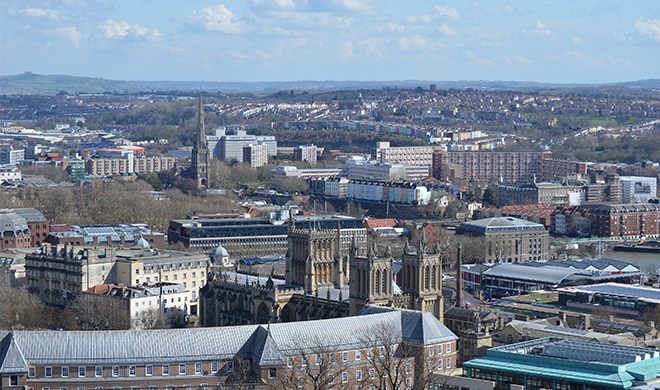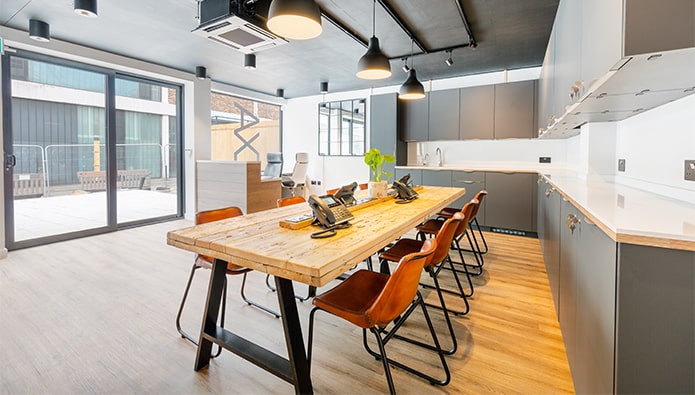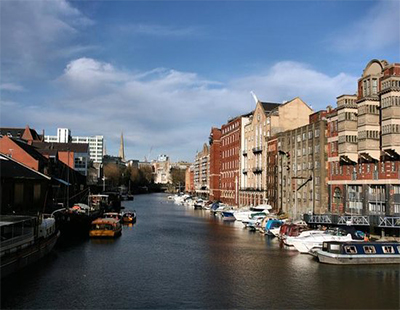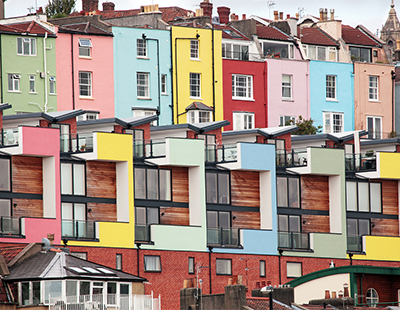What does Bristol offer?
A key regional city, with good links to London, Bath, Cardiff and Oxford, Bristol was previously best known for its shipping and trading prowess, but its modern-day economy is driven by the financial services, electronics, aerospace and creative media industries, as well as a thriving nightlife scene thanks to a range of bars, clubs, restaurants, theatres and local attractions.
The former city centre docks have been transformed into leisure, culture and heritage destinations, while its two universities – the University of Bristol and the University of the West of England – have a combined student population of over 50,000.
It has also developed a reputation in recent years for being green-minded, liberal, alternative and a little bit left-field. Bristol has a long association with the green movement, held the status of European Green Capital 2015 and calls itself the UK’s first cycling city, thanks to its range of national cycle routes and links to Sustrans, the charity behind the development of the National Cycle Network.

It’s perhaps most famous, though, for the iconic Clifton Suspension Bridge, which spans the Avon Gorge and the River Avon, linking Clifton in Bristol to Leigh Woods in North Somerset. Brunel’s masterpiece, the Grade I listed structure has been seen as the symbol of the city since it first opened to the public in December 1864 – and is still entirely funded by tolls. It’s generally considered to be one of the world’s greatest bridges and a masterclass in engineering innovation.
As well as being a thriving, happening city in its own right, it also offers good access to other parts of the UK, with Bristol Temple Meads to London Paddington achievable in 1 hour 37 minutes, while Cardiff Central is 47 minutes away and Bath Spa a mere 11-minute journey by train. Bristol Airport, meanwhile, offers flights to more than 125 destinations worldwide.
What are the most popular property types in Bristol?
NEXA’s research revealed that semi-detached properties are currently the most common type of home for sale in Bristol, overtaking apartments which were previously most popular.
Less available, but still making up a sizeable chunk of the Bristol market, are detached properties, terraced homes and townhouses.
Overall, there has been a 6% fall in the average number of properties on the market in the city now compared to 12 months ago, down from 3,027 to 2,846.
For those considering buying a home in the city, NEXA advises a cautious approach. “When it comes to buying a Bristol home, and so you do not make any decisions you will regret later on, taking your time is always the more practical option,” Jake Gready, managing director of NEXA Bristol, said. “The amount of money that is involved in buying a home and all the costs connected with it means that you should not rush into buying or selling without due consideration.”
.jpg)
He also advises that buyers and investors shouldn’t rely on the portals alone when browsing for property. “Don’t forget that upwards of 10% of homes do not make it to the major portals (Rightmove, Zoopla and OnTheMarket), so don’t just rely on the portals to let you know what is coming on the market. The number of times I speak to disappointed buyers who missed out because other buyers registered directly with the agent for property, whilst they relied on the portals.”
What problems might investors encounter?
The NEXA research revealed that the post credit crunch trend of less people moving continued last year. The final property transaction figures for 2018 were recently published and found that 23.2% less Bristol people are selling their homes annually since the credit crunch, when compared to the post-millennium years of 2000 to 2005.
The agency claims, however, that this is not just an issue of the Bristol housing market slowing down since the credit crunch. “The challenge is to split out shorter-term factors such as Brexit and the elections from longer-term structural issues of the UK society, because when these most recent property transaction figures are seen against longer-term trends for Bristol, they suggest more significant issues in the Bristol housing market,” Gready added.
In the late 1990s, some 7,732 properties were sold annually in the Bristol area. In the same location, the Millennium boom saw transactions increase to 9,551 per year. During the global financial crisis and subsequent retrenchment of the mortgage market, property sales then dropped by more than a third to 5,790.
Post credit crunch (2012 and beyond) there has been locally, on average, 7,335 properties sold annually.
“So, whilst there was a recovery from 2013 onwards, it was rather uninspiring when compared to the pre-credit crunch years, with a lacklustre performance in property transactions since the mid-2010s,” Gready commented.
To those who ask why we should be concerned about the number of property transactions and not the change in property values, Gready says the number of transactions are a far more exact bellwether for the health and potency of a local housing market.
“As less people have been selling their homes locally, this is not only bad for the Bristol housing market but for the economy locally, especially when you consider how many allied businesses (builders, decorators, solicitors, removal vans, estate agents, mortgage arrangers and other people) lose out as a result.”
Gready says that ‘grand home-building programmes’ from central government – increasing the supply of property – would help transaction figures in the long-term, but in the short-term he suggests a quicker improvement may come from modifications to stamp duty.
“First-time buyers don’t need to pay stamp duty up to a certain level, yet those stamp duty concessions could be extended to those mature homeowners looking to downsize. This could liberate a meaningful number of mature family homes occupied principally by this mature generation and the tax lost through stamp duty could be replenished by a revaluation of the Council Tax bands?”

Biggest change in Bristol?
According to Gready, the biggest seismic shift to the Bristol property market has been the growth of the rental market, which has more than doubled in the last 15 to 20 years.
“So how can the social housing sector remain roughly at the same level since the millennium, homeownership slightly grow, yet the private rental sector be so huge? Well, it comes down to the fact that many more homes have been built in Bristol in the last 15 to 20 years, and a lot of them have been bought for buy-to-let, or Bristol homeowners with second-hand starter homes have also sold them to buy-to-let landlords and they have bought larger, brand new homes.”
Gready added: “The Housing Minster said recently he was concerned that new homebuilders were building the wrong types of homes in the wrong places at the wrong prices. Many (not all) tenants are tenants because they can’t afford the deposit and as there is a direct correlation between the rent’s landlords charge and tenant’s earnings (i.e. as earnings go up, rents go up and vice versa). As earnings for the last seven years have been subdued, the property tenants have been able to afford in Bristol are the smaller one and two bed properties. Yet a lot of these tenants are now having families (with the need for larger property with three, even four bedrooms).”
Gready concluded by saying that, whilst we are still a country of homeowners and even though there has been a slight growth in numbers, the long-term trend is downwards if there aren’t enough new homes in the right places, at the right price.
For now, people in Bristol will increasingly continue to rent - good news for Bristol’s buy-to-let landlords, but maybe problematic for the long-term health of the city’s property market overall.
NEXA Bristol launched in May this year, with Gready – who has been in the property industry for 25 years – joined by a number of former professional Bristol rugby players who have since developed careers in the property sector, mostly as developers. They operate out of refurbished containers in the city's Wapping Wharf area.
You can read the full report here.





.jpg)





.jpeg)
.png)

.jpg)








Join the conversation
Be the first to comment (please use the comment box below)
Please login to comment